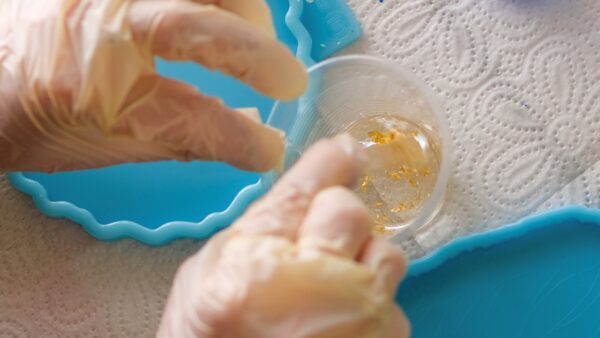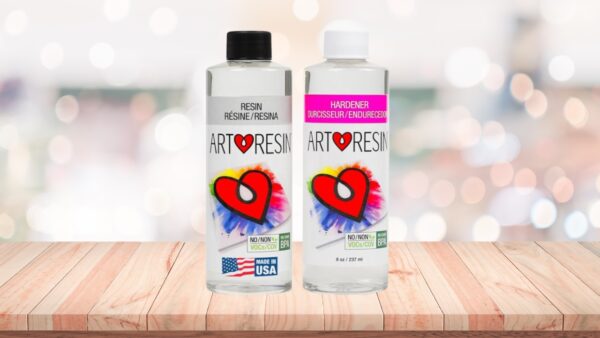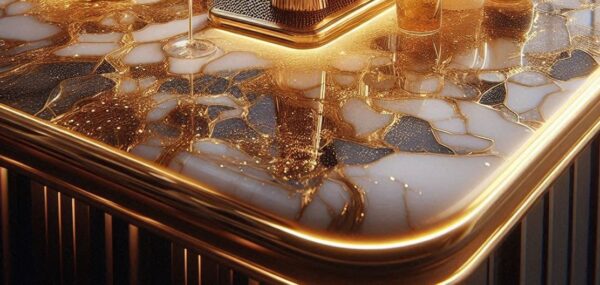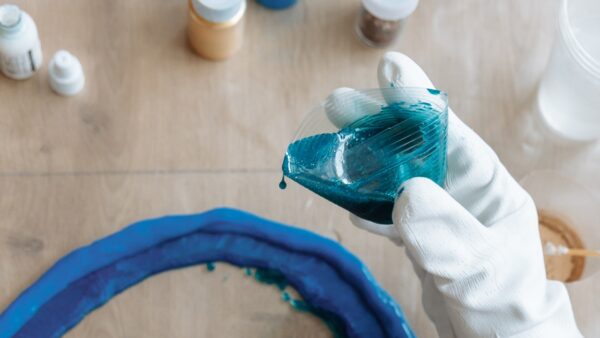7 Surfaces Resin Will Not Stick To ❌
Hello crafters! Ever found yourself puzzled by why resin decides to stick to some surfaces, but gives others the cold shoulder? If you’re knee-deep in resin projects, you’ve probably been wondering about the surfaces resin will not stick to.
In this article, we’ll tell you about the common surfaces that resin will not stick to. This will hopefully help you out with some of your resin ideas.
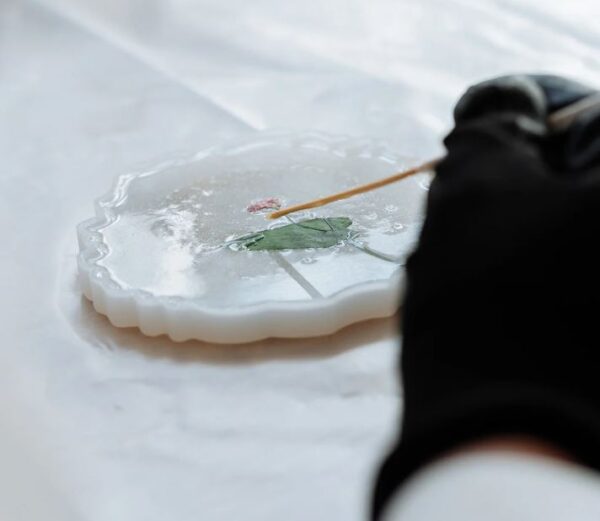
Let’s dive into the most popular surfaces resin will most likely not stick to. We will be talking about epoxy resin and UV resin.
Surfaces That Resin Will Not Stick To
1. Silicone Molds & Mixing Cups
Silicone emerges as a favorable material for crafters seeking non-stick surfaces in their resin projects. The non-adhesive nature of silicone becomes a valuable asset, especially in molding applications.
Crafters can benefit from the ease of demolding resin creations from silicone molds without the worry of adhesion.
This non-stick quality simplifies the crafting process, allowing for smooth and straightforward removal of cured resin pieces.
This makes silicone molds and silicone mixing cups an excellent choice for those who appreciate the convenience of a non-adhesive surface.
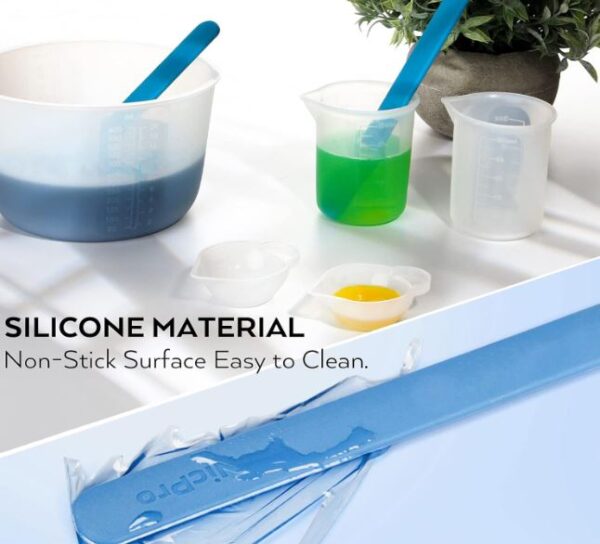
2. Silicone Baking Mats
This is one of those resin supplies that you will absolutely love to have on hand. Silicone baking mats are handy for crafters because they are flexible, durable, and non-stick with epoxy resin and UV resin.
They make crafting easier by providing a surface that resin doesn’t stick to. This means you can easily handle and remove your resin creations from the mats without any hassle.
For crafters who like the convenience of a surface that doesn’t make things stick, silicone baking mats are a great addition to their crafting supplies, making the creative process smoother.
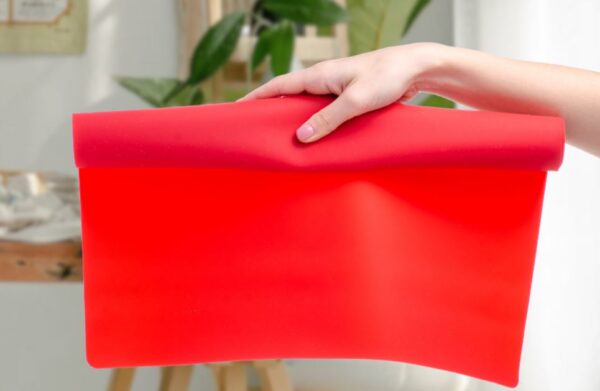
Reasons To Love Silicone Baking Mats For Resin Artists
Non-Stick Surface: Silicone baking mats provide a naturally non-stick surface, making them ideal for resin artists to work on without worrying about the cured resin adhering to the mat.
Easy Cleanup: Resin spills or drips during the pouring and curing process are common. A silicone baking mat facilitates easy cleanup, as the resin can be peeled off once it has cured, leaving the mat intact and ready for reuse.
Surface Protection: Placing a silicone baking mat on your work surface protects it from direct contact with resin. This is especially useful for preventing any unintentional sticking of resin to the work surface.
Flexible and Durable: Silicone baking mats are flexible, which makes them easy to manipulate and remove cured resin from. Additionally, they are durable and can withstand the chemical nature of resin without degrading.
Versatile Workspace: Silicone baking mats come in various sizes, providing a versatile workspace for resin artists. Whether you’re working on small jewelry pieces or larger art projects, these mats offer a convenient and non-stick surface for your resin creations.
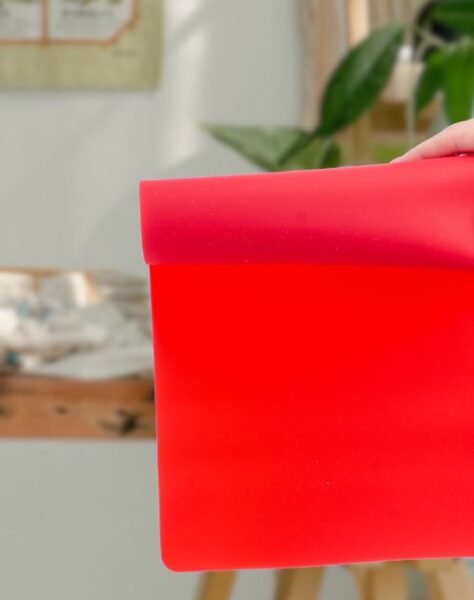
3. Wax Coated Papers
Crafters often find wax-coated papers useful for projects that need a non-stick surface. These papers, treated with a layer of wax, provide a smooth and resistant surface that resin does not adhere to.
Use thicker wax coating paper like thick waxed butcher paper. You might not have the best results with thinner paper like regular kitchen waxed paper.
These papers can be used for building up the sides of a resin piece for making a moat for pouring. If you are pouring the resin directly onto the surface, it’s best to use silicone instead.
Wax-coated papers may prove too thin for removing the cured resin.
4. Certain Plastics
Will epoxy resin stick to plastic? Well that depends. Using heavy plastics that can be taken apart for resin projects can be used as long as they are totally smooth.
The weight of heavy plastics adds stability to molds and work surfaces, reducing the risk of spills or disruptions during the resin curing process.
You can also pour directly onto thin plastic for free form geode resin art or coasters. You cannot pour resin into plastic that has no way of releasing the resin once it is cured. It’s best to just use silicone.
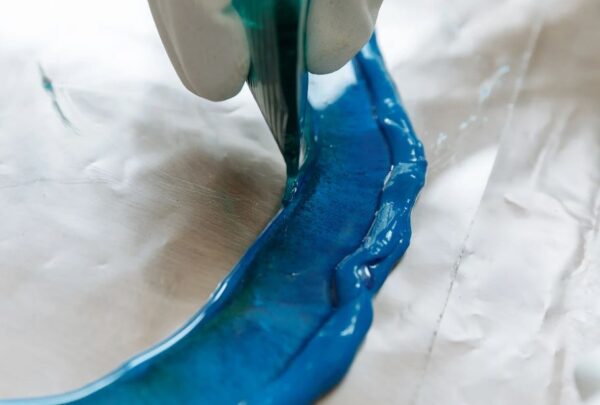
5. Candle Wax
Resin typically does not adhere well to candle wax. Candle wax is designed as a non-stick material, enabling easy removal of candles from molds. Keep in mind that candle wax is not going to work for using as a mold. The resin will heat up and warp it.
Note that the effectiveness may vary based on the specific type of wax used and other factors, so it is recommended to test in a small, area before using it in larger resin projects.
6. Beeswax
This type of wax, like other waxes, generally has a non-stick quality, and resin typically does not adhere well to it.
Crafters often use beeswax as a natural release agent in various crafting applications, including resin projects. DIY’ers appreciate its smooth and non-adhesive surface, which allows for easy demolding of cured resin.
Applying beeswax as a coating on molds or work surfaces can help ensure that you can remove resin creations without encountering any sticking issues.
As with other materials, it’s advisable to conduct a small-scale test to confirm compatibility before incorporating beeswax into larger resin projects. And like the candle wax, resin can warp beeswax when it heats up during the curing process.
7. Resin Mold Release Products
Resin mold releases play a crucial role in the resin crafting process, serving as a barrier between the resin and the mold surface to facilitate easy demolding.
These releases are specially formulated substances designed to prevent the resin from sticking to the mold, ensuring a smooth and successful separation once the resin has cured.
Common types of resin mold releases include commercial mold release sprays, powders, or liquid solutions that are applied to the mold prior to pouring the resin.

They create a thin layer that minimizes adhesion, allowing crafters to extract their cured resin creations without damaging the mold or the finished piece.
Mold releases are particularly useful when working with intricate or detailed molds, enhancing the overall efficiency and longevity of the molds while maintaining the integrity of the crafted resin items.
Ways To Use Non Stick Surfaces For Resin
01
Mold Casting:
When creating resin castings using molds, applying a non-stick surface ensures that the cured resin can be easily removed without damaging the mold or the crafted item.
02
Work Surface Protection:
To protect work surfaces from accidental resin spills or drips during the pouring and curing process, using a non-stick surface like silicone baking mats or wax-coated papers can make cleanup easier.
03
Pouring Surfaces:
If you’re pouring resin into a container or onto a surface to create unique shapes or designs, using a non-stick surface helps prevent the resin from adhering to the container, making it easier to release the cured piece.
Some molds will also give you a matte finish on your final pieces.
04
Demolding Objects:
When working with intricate molds or 3D-printed shapes, having a non-stick surface ensures that the cured resin objects can be easily demolded without distortion or breakage.
05
Resin Jewelry:
Crafters often use non-stick surfaces when creating resin jewelry pieces. This helps in demolding delicate and detailed jewelry molds without affecting the final appearance of the resin items.
06
Creating Resin Art on Canvas:
Artists may apply a non-stick surface on the canvas before pouring resin for creating unique resin art. This allows for easy removal and reduces the risk of the resin adhering to the canvas.
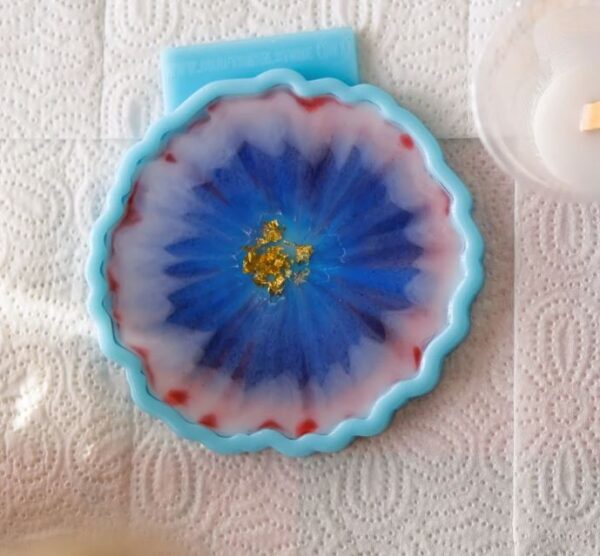
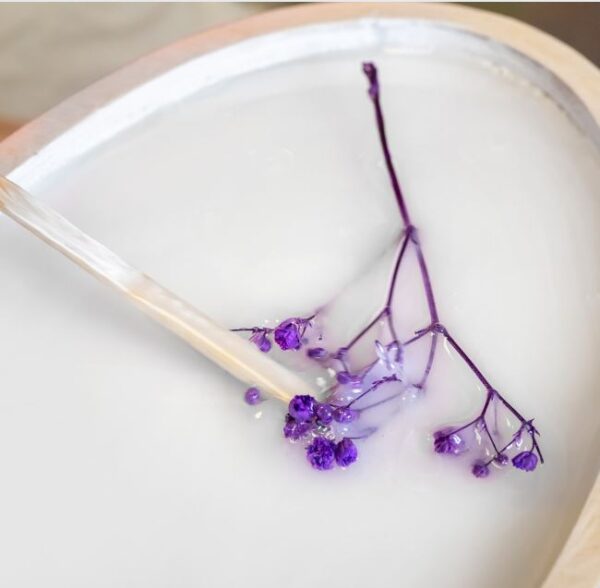
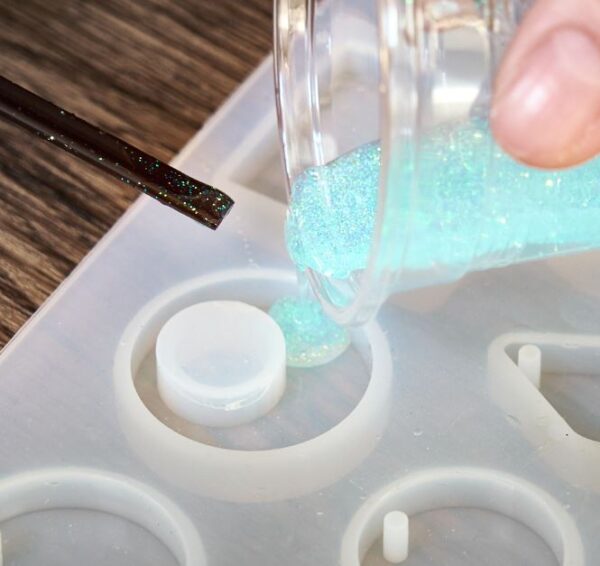
FAQ’s About Non Stick Resin Surfaces
Using a non-stick surface is crucial because it facilitates easy demolding of cured resin, preventing damage to molds, work surfaces, and crafted items. It simplifies the crafting process and ensures a smooth and successful outcome.
To prepare a mold with a non-stick release agent, apply a thin, even layer of the release agent to the interior surface before pouring the resin. This helps in easy demolding once the resin has cured.
While many surfaces can be made non-stick with the right preparation, some materials inherently resist adhesion, like silicone. However, proper surface preparation, such as cleaning and priming, is often necessary for optimal results.
One potential downside is that certain non-stick substances may leave a residue on the cured resin, affecting its appearance. It’s essential to choose compatible release agents and follow manufacturer recommendations to mitigate any potential issues.
Resin typically adheres well to glass surfaces.
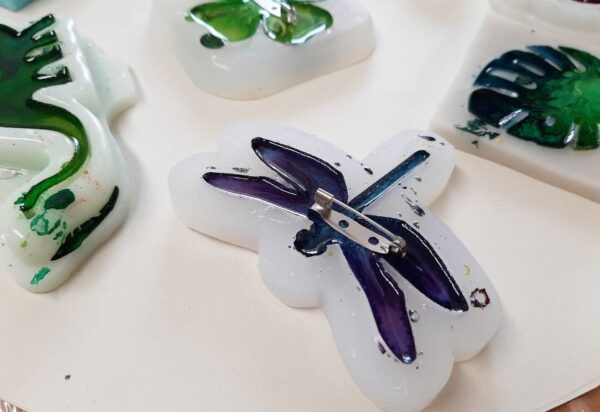
In Closing: Thank you for diving into the world of non-stick surfaces in resin crafting with us!
Let us know if you have any secret surfaces that resin does not stick to and share your experiences when working with resin.
Happy crafting, and may your resin projects be forever smooth and effortlessly demolded!

